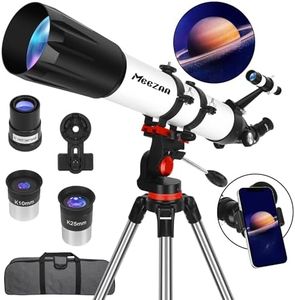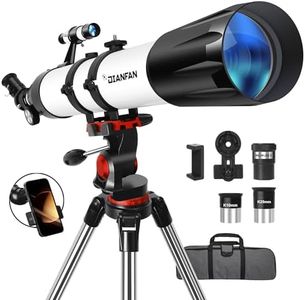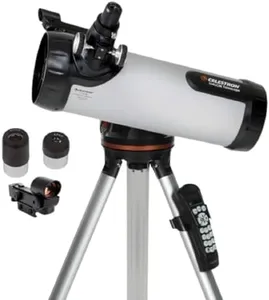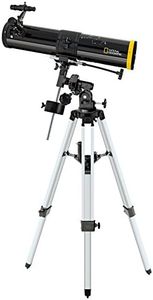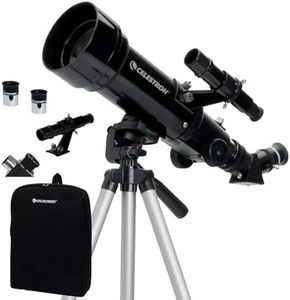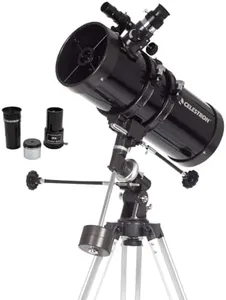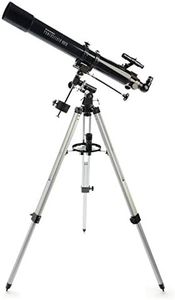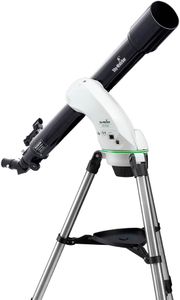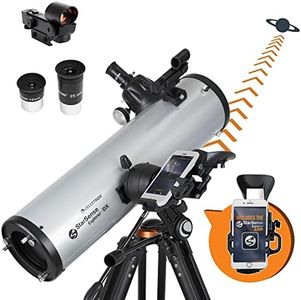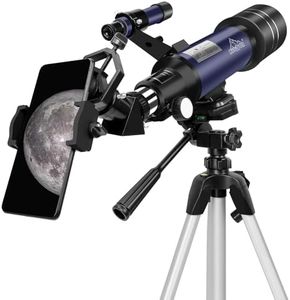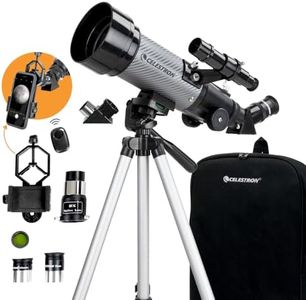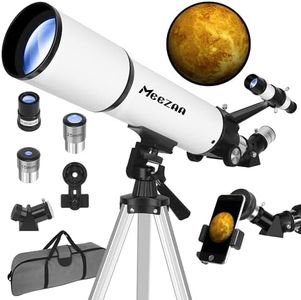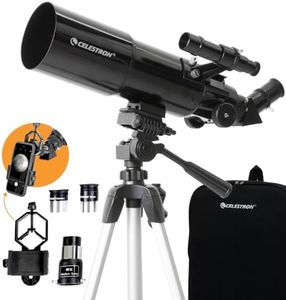We Use CookiesWe use cookies to enhance the security, performance,
functionality and for analytical and promotional activities. By continuing to browse this site you
are agreeing to our privacy policy
10 Best Telescope For Beginners
From leading brands and best sellers available on the web.By clicking on a link to a third party's website, log data is shared with that third party.
Buying Guide for the Best Telescope For Beginners
Choosing a telescope as a beginner is an exciting step into exploring the night sky. It's important to focus on ease of use, portability, and learning potential rather than getting carried away with technical details or extreme magnification. Think about what you most want to observe—such as the Moon, planets, or distant galaxies—and how you'll use your telescope, whether it’s for backyard astronomy or occasional trips to darker skies. Always look for a telescope that's simple to set up, offers a clear image, and helps you enjoy discovering the cosmos without feeling overwhelmed.ApertureAperture refers to the diameter of the main light-gathering lens or mirror in a telescope. This is the most important factor because a larger aperture lets in more light, allowing you to see fainter objects and finer details. Apertures are usually measured in millimeters or inches and, generally, bigger is better but also means a heavier and less portable telescope. Beginners often do well with an aperture in the range of 70mm to 130mm. Smaller apertures are lightweight and easy to move, perfect for casual observing, while larger ones reveal more celestial detail but can be bulkier. Think about how much you plan to transport your telescope and what you want to see—wider apertures excel at showing more deep space objects, but if your main interest is the Moon or planets, even smaller apertures can be satisfying.
Focal LengthThe focal length is the distance from the main lens or mirror to where the telescope brings light into focus. This affects both the image size and the field of view. Telescopes with longer focal lengths usually provide higher magnification, which is useful for viewing planets and the Moon in detail, but they give a narrower field of view, making it less suitable for wide sky scanning. Shorter focal lengths offer a wider field of view, ideal for seeing star clusters and larger sky objects. Beginners often find shorter focal length telescopes more versatile because they make it easier to find and follow objects. Decide based on your observing goals: if you love close-up, detailed views, lean toward longer focal lengths; for rich, panoramic sky sweeps, look for shorter ones.
Type of MountThe mount is what keeps your telescope steady and aims it at objects in the sky. There are two common types: alt-azimuth (moves up-down and left-right) and equatorial (tracks the sky’s rotation). Alt-azimuth mounts are simpler and very intuitive, perfect for beginners who want quick, easy viewing. Equatorial mounts allow smoother tracking of objects as they move in the sky but can be a bit tricky to use at first. If you’re new to telescopes, an alt-azimuth mount lets you start observing right away with little frustration, while an equatorial mount is worth learning later if you get more serious or plan on astrophotography.
Optical DesignThere are three main types of telescopes: refractors, reflectors, and compound. Refractors use lenses and are usually low-maintenance and great for planets and the Moon. Reflectors use mirrors and often give you more aperture for your money, making them good for faint, deep-sky objects but require occasional adjustment. Compound telescopes combine lenses and mirrors for a compact design, balancing ease of use and versatility but can cost more. As a beginner, choose a design that matches your interest and comfort with maintenance—refractors are user-friendly, reflectors are light-gathering champions, and compound types are all-rounders.
Portability and SizeHow large or heavy a telescope is will greatly affect how much you use it. Smaller, lighter telescopes are much easier to set up, take down, and transport—this means you’re more likely to use them frequently. Bulkier telescopes might offer better views, but if they become a hassle to move or store, you might find yourself using them less often. Think about your storage space, typical observing locations, and how much weight you’re comfortable carrying. The best telescope is the one you’ll use often, so go for a convenient model if portability matters to you.
